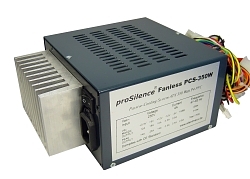 I’m still experimenting with FreeNet, and the more I
use it, the better it gets. I’ve done some speed tests, and it’s actually
not as bad as I thought first: I’m able to download with speeds of around
40 KiB/s (that’s 40 kibibytes per second, a kibibyte is 1024 bytes whereas
a kilobyte is 1000 bytes. These units are the new IEC international
standard units for binary multiples — yes, they sound hillarious!
There’s also mebibytes, gibibytes, and tebibytes available…).
I’m still experimenting with FreeNet, and the more I
use it, the better it gets. I’ve done some speed tests, and it’s actually
not as bad as I thought first: I’m able to download with speeds of around
40 KiB/s (that’s 40 kibibytes per second, a kibibyte is 1024 bytes whereas
a kilobyte is 1000 bytes. These units are the new IEC international
standard units for binary multiples — yes, they sound hillarious!
There’s also mebibytes, gibibytes, and tebibytes available…).
Since FreeNet is a peer-to-peer network, then the speed depends on how
well-connected your node is. It was only yesterday that I reached 40
KiB/s, the first days were much slower. But now it seams, that my node has
found a couple of “nearby” nodes with a reasonable bandwidth.
If people started using FreeNet here at [Skejbygård][], then I’m sure that
I would see much higher download rates.
Contents on FreeNet
 There’s actually a lot of interesting contents to be
found on FreeNet, it’s much more than just piracy. The next few links will
only work for people who run a server on their local machine. I’ve found
pages about philosophy (see the text on Objectivism — The Philosophy of
Ayn Rand), recipes with lots of images, such as this recipe for
Stir-Fried Chicken & Chile Tacos, and poisonous plants like the
Foxglove (”Digitalis purpurea”), that’s the plant in the image on
the right.
There’s actually a lot of interesting contents to be
found on FreeNet, it’s much more than just piracy. The next few links will
only work for people who run a server on their local machine. I’ve found
pages about philosophy (see the text on Objectivism — The Philosophy of
Ayn Rand), recipes with lots of images, such as this recipe for
Stir-Fried Chicken & Chile Tacos, and poisonous plants like the
Foxglove (”Digitalis purpurea”), that’s the plant in the image on
the right.
I also found this funny story about the perils of Girlfriend 5.0
somewhere out there, enjoy!
Desperately seeking technical support!
I’m currently running the latest version of Girlfriend 5.0 and having
some problems. I’ve been running the same version of Drinking Buddies
1.0 for years as my primary application, and all the Girlfriend releases
have always conflicted with it.
I hear that Drinking Buddies won’t crash if you minimize Girlfriend
with the sound off, but since I can’t find the switch to turn it off, I
just run them separately and it works OK. Girlfriend also seems to have
a problem coexisting with Golfware, often trying to abort my Golf
program with some sort of timing incompatibility.
I probably should have stayed with Girlfriend 1.0, but I thought I
might see better performance with Girlfriend 2.0. After months of
conflicts, I consulted a friend who has experience with Girlfriend 2.0.
He said I probably didn’t have enough cache to run Girlfriend 2.0 and
eventually it would require a Token Ring upgrade to run properly. He was
right.
As soon as I purged my cache, Girlfriend 2.0 uninstalled itself.
Shortly after that, I installed a Girlfriend 3.0 beta. All the bugs were
supposed to be gone, but the first time I used it, it gave me a virus.
After a hard drive clean up and thorough virus scan, I very cautiously
upgraded to Girlfriend 4.0. — this time using a SCSI probe and virus
protection. It worked OK for a while until I discovered Girlfriend 1.0
wasn’t completely uninstalled! I tried to run Girlfriend 1.0 again with
Girlfriend 4.0 still installed, but Girlfriend 4.0 has an unadvertised
feature that automatically senses the presence of Girlfriend 1.0 and
communicates with it in some way, resulting in the immediate removal of
both versions!
The version I have now works pretty well, but, like all versions, there
are still some problems. The Girlfriend package is still written in some
obscure language that I can’t understand, much less reprogram. And I’ve
never liked how Girlfriend is totally object-oriented. A year ago, a
friend upgraded his version to GirlfriendPlus 1.0, which is a
Terminate-and-Stay-Resident version. He discovered GirlfriendPlus 1.0
expires within a year if you don’t upgrade to Fiancee 1.0. So he did.
But soon after that, you have to upgrade to Wife 1.0, which he
describes as a “huge resource hog.” It has taken up all his space, so he
can’t load anything else. One of the primary reasons that he upgraded to
Wife is that it came bundled with FreeSex 1.0. Well, it turns out that
the resource allocation module of Wife 1.0 sometimes prohibits access to
FreeSex (particularly the new Plug and Play items he wanted to try). On
top of that, Wife 1.0 must be running on a well warmed-up system before
he can do anything. And, although he did not ask for it, Wife 1.0 came
with Mother-In-Law 1.0, which has an automatic pop-up feature he can’t
turn off.
I told him to install Mistress 1.0, but he said that he heard that if
you try to run it without first uninstalling Wife, that Wife 1.0 will
delete MSMoney files before uninstalling itself. Then Mistress 1.0 won’t
install anyway, due to insufficient resources.
Is anybody out there able to offer technical advice?
 The network has been buzzing with activity after
FreeNet got mentioned on SlashDot, I’m seeing a constant total
throughput of about 50 KiB/s from my node, split between about 35 KiB/s
upstream and 15 KiB/s downstream.
The network has been buzzing with activity after
FreeNet got mentioned on SlashDot, I’m seeing a constant total
throughput of about 50 KiB/s from my node, split between about 35 KiB/s
upstream and 15 KiB/s downstream.
 I’ve now succesfully inserted GimpsterDotCom in
FreeNet using the
I’ve now succesfully inserted GimpsterDotCom in
FreeNet using the  There’s actually a lot of interesting contents to be
found on FreeNet, it’s much more than just piracy. The next few links will
only work for people who run a server on their local machine. I’ve found
pages about philosophy (see the text on
There’s actually a lot of interesting contents to be
found on FreeNet, it’s much more than just piracy. The next few links will
only work for people who run a server on their local machine. I’ve found
pages about philosophy (see the text on